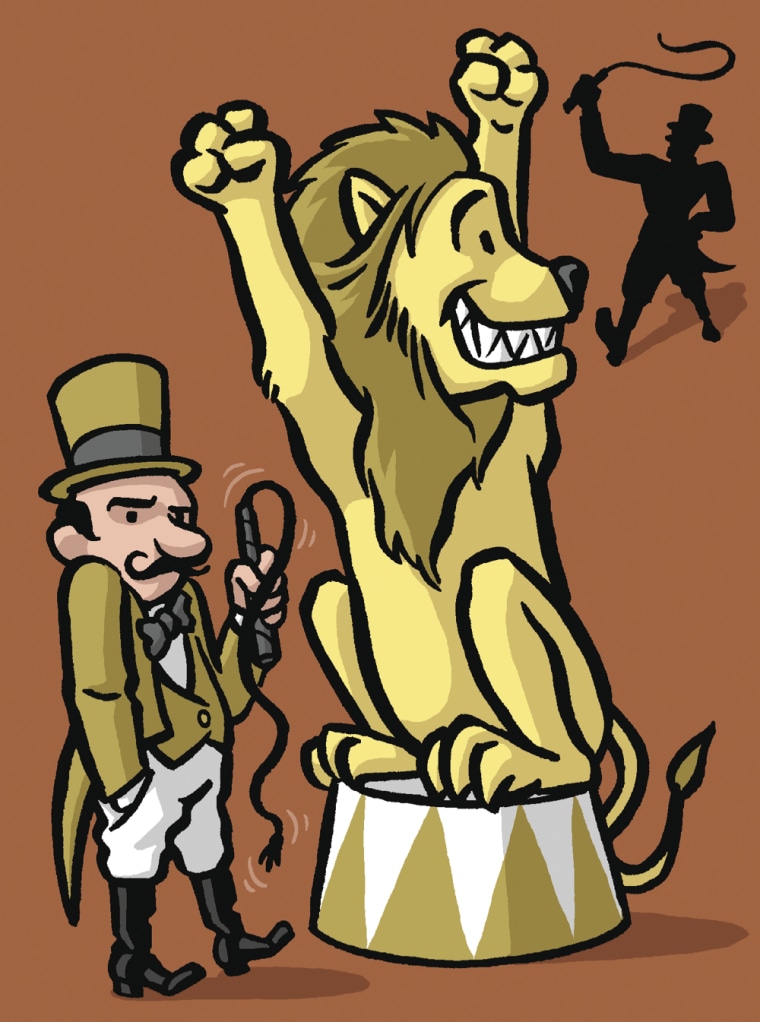When news broke that Timothy Geithner was Barack Obama’s pick for secretary of the treasury, the stock market jumped more than 6 percent in the space of an hour. Obviously, this was a good thing, but there was also something weird about the spectacle of the Street’s once fearless free marketeers exulting over a government appointment, as if they were nomenklatura members cheering a new Politburo chief.
It showed just how central a few government officials have become to the well-being not just of the markets but of the economy as a whole. For better or worse, we now live in a world in which the treasury secretary controls hundreds of billions of dollars in spending and shapes the fate of some of the nation’s biggest companies. That’s quite a job to ask someone to do.
If anyone is up to the task, Geithner seems to be. A decade ago, as a treasury undersecretary, he helped orchestrate the successful response to the Asian financial meltdown. As head of the New York Federal Reserve, he was prescient about systemic risks to the financial system. And, during the current crisis, he’s the third member of the fire brigade led by the outgoing treasury secretary, Henry Paulson, and the chairman of the Federal Reserve, Ben Bernanke.
Geithner will be well-partnered: Christina Romer, who will be running the Council of Economic Advisers, is an expert on the Great Depression, and Larry Summers, who is both a superlative academic economist and a former treasury secretary, will be running the National Economic Council. It’s not surprising that Obama’s economic team is already drawing comparisons to the New York Yankees. (Let’s hope they’re the 1927 Yankees, rather than the more recent edition.)
Still, no treasury secretary has ever entered office with as much responsibility as Geithner will have. That’s partly because the crisis is so huge, but it’s also the result of an evolution in the role that we expect government to play in the economy.
For much of American history, treasury secretaries were nondescript, and their powers circumscribed. When the Panic of 1907 nearly froze financial markets, it was to J.P. Morgan, not Treasury Secretary George Cortelyou, that investors turned for a solution.
Our contemporary preference for government rescues has its roots in the Great Depression, when Treasury Secretary Andrew Mellon became notorious for his contention that, even as the economy was collapsing, the market should simply be allowed to do its work. “Liquidate labor, liquidate stocks, liquidate the farmers, liquidate real estate,” he coldly advised. The perceived failure of this approach discredited non-intervention, and ended up enhancing the influence of Mellon’s successors.
In recent years, as the frequency and the severity of financial crises have increased, so, too, has the prominence of the treasury secretary’s role. During the Clinton administration, Robert Rubin engineered a backdoor bailout of the Mexican economy before helping to manage the global financial crisis of the late '90s. Paulson seems to unveil a new government program nearly every day, and his actions over the past year have meant life or death for financial institutions.
The problem is that for this kind of power to be effective in a crisis, the markets need to be confident that the government has a coherent strategy in place. And while Paulson has certainly acted aggressively in the past two months, at times it has seemed as if the treasury were making things up as it went along.
Initially, Paulson rejected the idea of using some of the bailout money to recapitalize banks, planning instead to buy toxic assets and get them off bank balance sheets. Then he announced that he would recapitalize banks and, a month later, that there would be no toxic-asset purchases after all. And last week he unveiled a plan to backstop consumer debt. On their own, each of these moves may have made sense. But the zigzags left the markets discombobulated and uncertain.
There’s no doubt that, in dealing with the crisis, Paulson has done a yeoman’s job. But in some respects he’s just been in the wrong place at the wrong time.
When he became treasury secretary, in 2006, he had more of a reputation as a dealmaker than as a strategic thinker. He was leery of regulation — at his nomination hearing, he warned of the perils of “creeping regulatory expansion” — and seemed skeptical of government interference with markets.
This background may have made Paulson the right man to deal with what then seemed like the Bush administration’s biggest priorities, things like tax policy and China. But it perhaps wasn’t the best preparation for orchestrating the largest government intervention in American history.
By contrast, Wall Street seems to see in Geithner someone who, with his experience fighting financial crises and regulating markets, has been effectively training for his new job for more than a decade. Furthermore, Geithner combines a sense of continuity with the prospect of decisive change. He’s an advocate of free markets, but he has also called for tighter regulation.
As a Rubin disciple, he believes in fiscal responsibility, but he also supports a major stimulus package. And while he was part of the team that watched Lehman Bros., he seems more comfortable with government action than Paulson, and therefore more likely to act in a consistent fashion.
In times of crisis, after all, it isn’t just what the government does that matters — it’s also the way the government does it. Geithner projects a conviction that acting to arrest financial meltdown is not just necessary but right. In these times, that’s something the market is surprisingly happy to hold on to.
